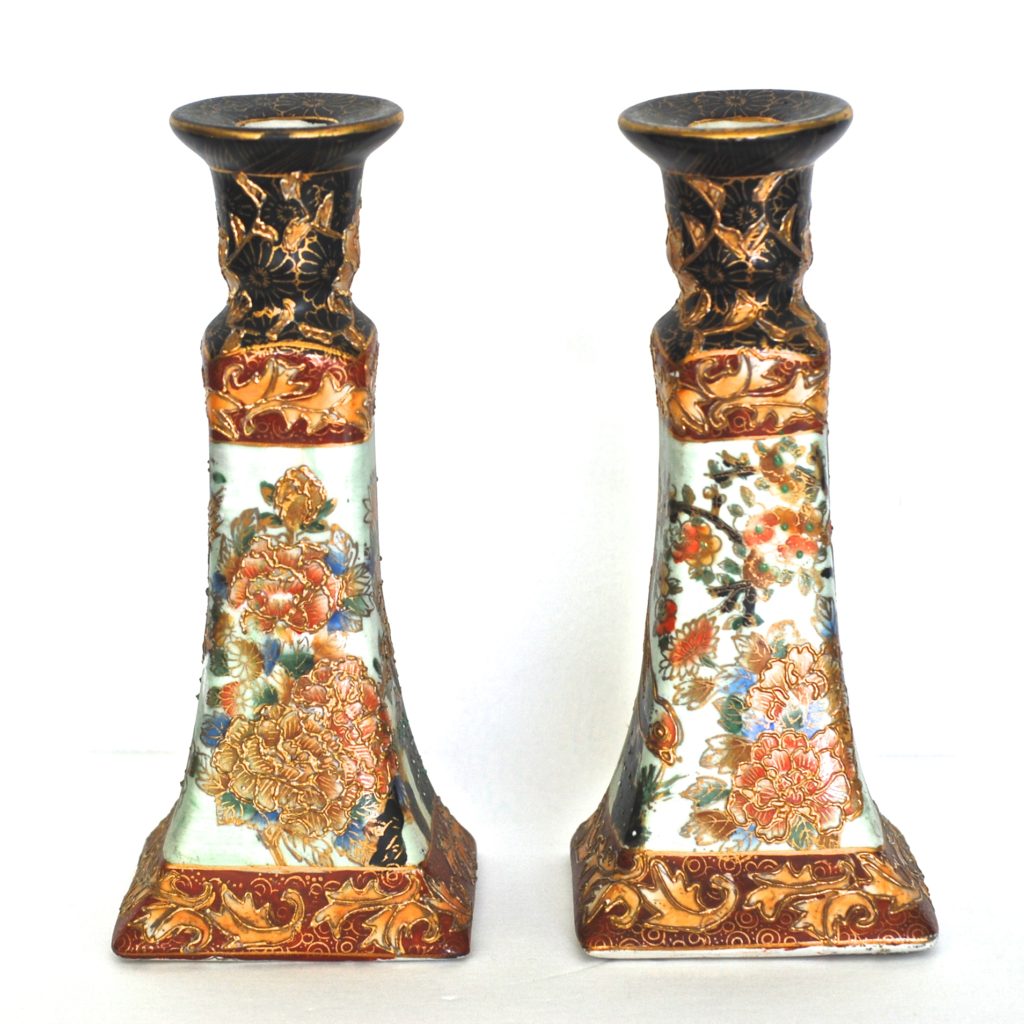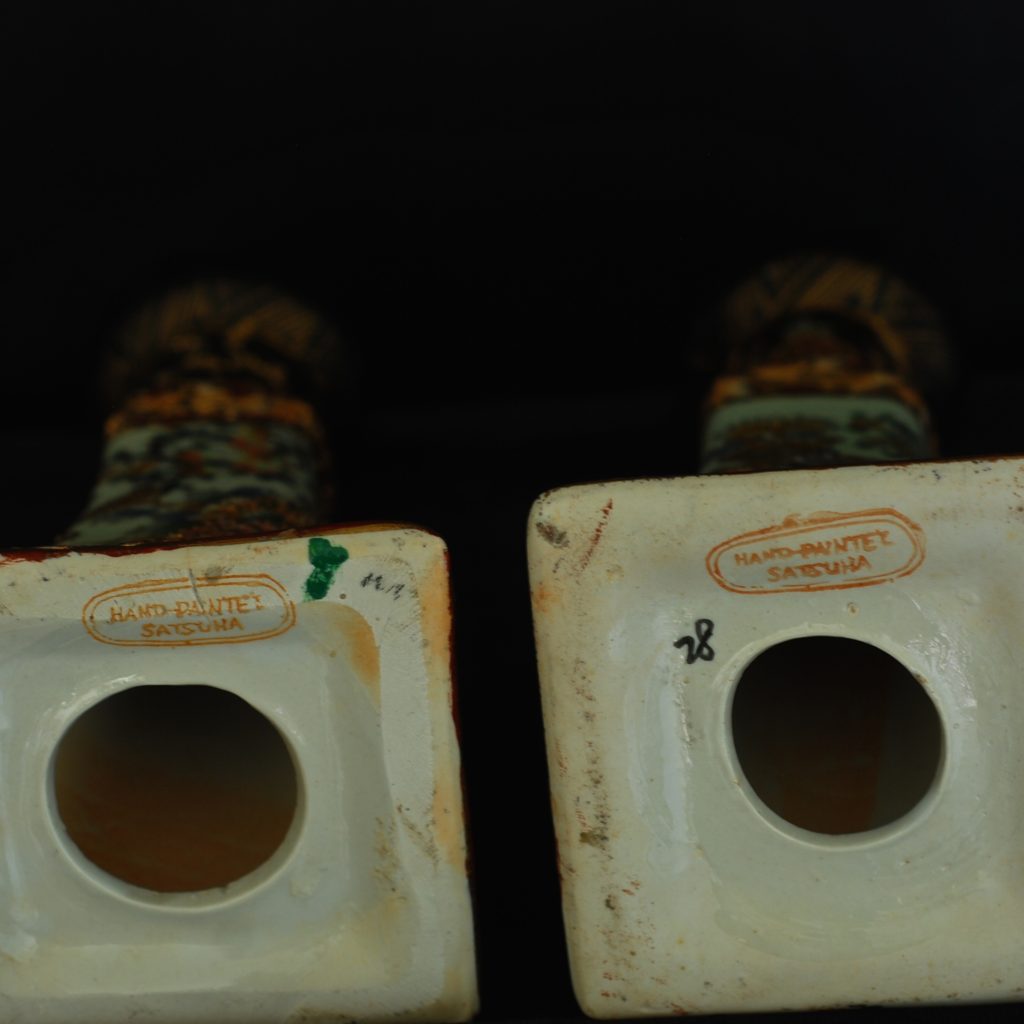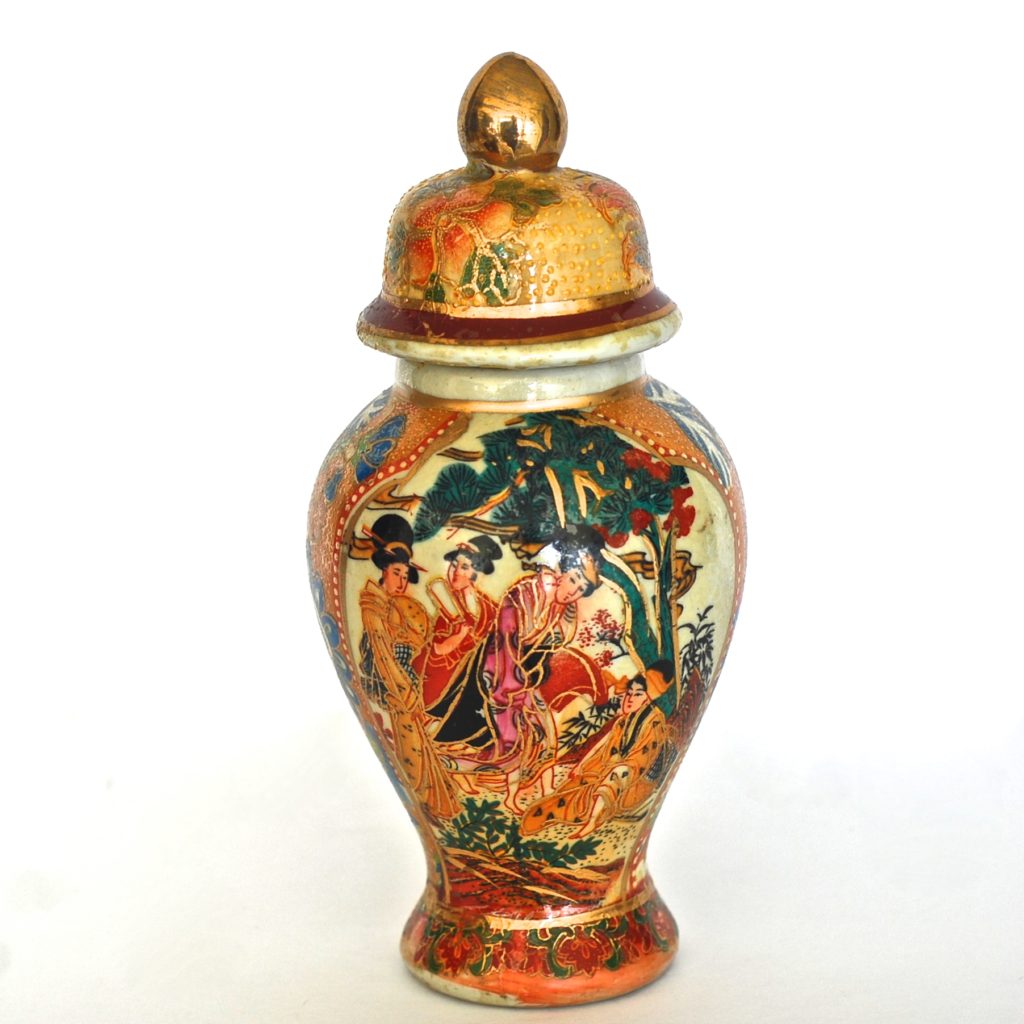Amazed & Glazed Over ~ The Artistry & History of Satsuma Pottery
There is nothing like antique Asian pottery. The fascination for these hand-painted works of art is never-ending. The time consuming aspects of creating artwork on porcelain, is truly mind boggling. Every hand decorated piece, is an original work of art, only instead of canvas, it is painted and glazed onto porcelain.
To most of us westerners without much knowledge of the complex history and masterful techniques passed on from one generation to another, to create such works of art, we still have an appreciation and awe of these items. In fact, Europeans and North Americans embraced the Asian aesthetic long ago.
For certain, the historical periods are confusing to the novice. The pottery/porcelain changed significantly throughout the various eras, conflicts and upheavals. This morning I learned this type of pottery had origins in Korea. The early Satsuma pottery dates to the 1600’s.
Originally Satsuma pottery was made of clay, not porcelain. Most of it was made for the Japanese market, not specifically for export. The early pieces are darker in colour, and less decorative (1688-1704) since they were primarily made for practical purposes in local kitchens.
By 1800 the more decorative Satsuma pieces began to emerge, referred to as brocade or nishikide decorations. These were often simple floral patterns using iron red, purples and a small amount of yellow. It is believed the origin of the artwork was from Kyoto during this period. Later on, they started using a gilding of raised gold or kin-nishikide. During this era, and the biggest difference between these earlier pieces, and the later pieces for export – is that they made use of negative space.
In 1867 Satsuma porcelain was featured prominently in the Paris Exposition Universelle, which was considered a success. By 1873 many factories throughout Japan began painting scenes on blank glazed stoneware. Between 1890 and the 1920’s it is estimated there were more than twenty estsuke factories creating Satsuma porcelain for the western market.
When the market began to focus on export, the interpretation of what appealed to western culture began to emerge. The changes to the decoration went from the simple and powerful use of empty space, to what is known as the horror vacui, or fear of empty space. In Greek the term is known as kentophobia, and the filling up of all spaces with artwork became the trend. This was part of the Victorian era trends throughout the world, and was reflected in European artwork as well.
The pieces produced for export in the late 1800’s are considered by some to be garish, however as fewer of these items are available, the appreciation increases. They are hand painted, gilded, and represent an interpretation of western appeal, specifically during an era where empty space in art was almost non-existent.
The few pieces of Satsuma pottery I have picked up over the years, are rich in colour, glazing, floral motifs, birds, and a variety of delightful imagery, with moriage, which is a special type of raised decoration, outlines, and a distinction like none other.
Although this porcelain changed over the years, it is still a culturally significant, and represents an artistic aesthetic that is distinctively Asian. The techniques cannot be replicated in North American or Europe. The history of pottery and porcelain from Asia is second to none.
In my opinion, the later Satsuma pieces are not garish, but idiosyncratic and beautiful. But then, some of us don’t suffer from the fear of empty spaces!
From 1885-1930’s there was a slump in the export market for Satsuma pottery. In addition to changing trends, it had been given negative reviews by many critics and collectors. In 1893 it was not well received at Chicago’s Exposition. However, it’s appeal did linger for several more years, and it remained an export commodity for Japan throughout the Meiji period (1868-1912).
When compared to the earlier and traditional Japanese artwork, the negative critique on the pieces made for the export market is understandable – because the really high end Satsuma porcelain is not flashy or garish. When examined closely, there are no flaws.
But perhaps, the exaggerations for the export market were somewhat maudlin. Who could blame them for interpreting the Victorian era western culture in such a manner? They brought something into existence that was representative of the time frame. It lets us examine not only the art, but shows us how art captures the influences that lead to change.
Even the later, mass produced export pieces of Satsuma porcelain are increasingly rare, so hopefully they will be taken care of, along with other antique artwork, that carries a rich, inherently beautiful, and very complex history.



